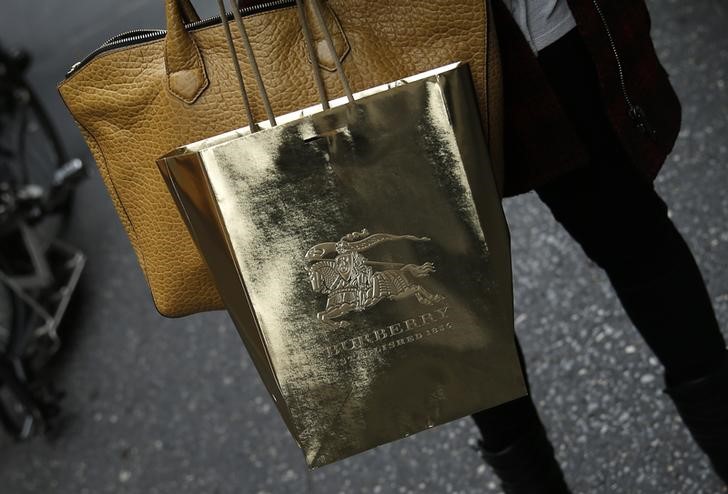This post was originally published on this site
https://i-invdn-com.akamaized.net/news/LYNXMPEB3E073_M.jpg
Investing.com — If you’re going to be a luxury brand, then price accordingly.
That’s the lesson Burberry (LON:BRBY) and others took from misguided attempts to broaden their appeal a few years back, and the U.K. fashion group with the distinctive checkered pattern took another big step toward correcting that error on Wednesday.
Admittedly, Burberry’s sales down 5% in constant exchange rates and down 9% in comparable store terms, missed its own and analysts’ estimates in the three months through December. But investors were willing to forgive a development that was down to the renewed closure of its stores during the key Christmas season, rather than any new mistakes of its own.
The market pushed Burberry stock up by 4.8% by mid-morning in London, focusing instead on CEO Marco Gobbetti’s summary that “We saw a strong increase in full-price sales as our collections and communication resonated well with new, younger clientele as well as existing customers.”
The younger clientele appears to have been attracted not least by a high-profile Instagram marketing campaign featuring Manchester United footballer Marcus Rashford, whose campaign for free meals for underprivileged children unable to get them at school during the pandemic may have soothed a few consciences about the indulgence implied in any Burberry purchase.
Burberry has been focusing since Gobbetti’s arrival on selling a higher proportion of its goods at the full price and a lower share through discounts. That paid off in the quarter, with full-price sales in leather goods and the group’s signature trenchcoats rising by between 13%-15%. The group was especially successful in selling at full prices through its online channel – seen by some analysts as a relative weakness – where sales grew 50%. In China, full-price online sales more than doubled.
Burberry’s relative reliance on its physical stores and tourism spending has made it one of the worst performers in high-end fashion in the last year. Even after Wednesday’s gains, it’s down nearly 20%, while Amundi’s Global Luxury ETF has risen 23% in the same period. Trading at less than four times trailing 12-month sales, it looks a lot cheaper than many other names in the luxury space.
Anyone watching Burberry’s stock on Wednesday from the headquarters of luxury rival Richemont may have had reason to feel aggrieved, though. The Swiss-based group eked out a 3% gain in sales, with its jewellery business posting a particularly impressive 9% rise. It too managed to raise online sales by some 13% overall, mitigating the effect of store closures worldwide. However, its growth now looks alarmingly reliant on Asia, where sales rose 21%. European sales fell by a similar amount, while North American revenue fell by 4%.
For both stocks, as for the sector in general, the end of lockdowns and the resumption of tourism can’t come quickly enough.

